This article was medically reviewed by Daniel Wozniczka, MD, MPH. Dr. Wozniczka is an Internal Medicine Physician, who is focused on the intersection of medicine, economics, and policy. He has global healthcare experience in Sub Saharan Africa, Eastern Europe, and Southeast Asia. He serves currently as a Lieutenant Commander in the U.S. Public Health Service and a Medical Officer for the Epidemic Intelligence Service in the CDC. He completed his MD at Jagiellonian University in 2014, and also holds an MBA and Masters in Public Health from the University of Illinois at Chicago.
There are 10 references cited in this article, which can be found at the bottom of the page.
wikiHow marks an article as reader-approved once it receives enough positive feedback. In this case, 90% of readers who voted found the article helpful, earning it our reader-approved status.
This article has been viewed 116,399 times.
Experts say shingles (herpes zoster) causes a painful, blistering skin rash that typically wraps around one side of your torso or face. During a flare-up, you may also experience fever, headache, upset stomach, and chills.[1] Research shows that shingles is caused by the same virus that causes chicken pox, which is the varicella zoster virus (VZV). Once you catch chicken pox, the virus remains in your body and may cause a shingles flare-up later in life.[2] While there's no cure for shingles, your doctor can give you medication to help you recover faster.
Steps
Identifying Early Symptoms
-
1Pay attention to uncomfortable skin sensations. Before the characteristic shingles blisters develop, you may feel pain, tingling, or itching in the area that is affected. The area may even become numb or be sensitive to touch.[3] This can occur any time between 1 and 5 days before the rash shows up.[4] If you feel any discomfort in a stripe-like pattern on your body for over a day, see your doctor and ask about shingles – especially if you have recently been in contact with anyone with a rash.
- Tell your doctor something like, “I have been feeling a burning sensation over my left ribs since yesterday, do you think I might have shingles?” They will ask you other questions and possibly prescribe an antiviral medicine to reduce the severity of symptoms.
-
2Note where your symptoms are located. Shingles generally develop on one side of your face or body. This is related to the way the virus affects your nerves and the parts of the body that those nerves are connected to. Common places to develop signs and symptoms of shingles are in single stripes over your ribs, on your neck or shoulders, and on one side of your face.[5]
- The most commonly affected area is in a stripe wrapping around one side of your torso.[6]
- If you have another condition that weakens your immune system (such as HIV, an autoimmune disorder, certain chronic infections, or cancer), the virus may be more widespread and affect both sides of your body.
Advertisement -
3Notice if you feel sick in other ways. In some cases, the virus that causes shingles can cause symptoms that affect your whole body (systemic symptoms). These symptoms may include:[7]
- Headache
- Chills
- Upset stomach or nausea
- Fever
Recognizing the Shingles Rash
-
1Look for redness. After the initial feeling of pain, itching, tingling, numbness, or sensitivity, look for a red rash to develop on that area of your skin. This usually occurs a few days after the initial discomfort.[8]
- Some people get the feeling of burning or pain and never develop the shingles rash.
-
2Identify blisters. The shingles rash forms blisters (or vesicles), which are small painful swellings in the skin filled with fluid. Shingles blisters generally appear in a group in a single area on the body.
- Do not touch or scratch your blisters – the fluid in the blisters contains the virus, and you can spread infection to other areas of your body. Keep your blisters covered and wash your hands often to minimize the risk of spreading the virus.
-
3Watch the blisters for scabbing. Shingles blisters usually crust over and form scabs 7-10 days after they appear. These should clear up in about 2-4 weeks, and the scabs should fall off. Do not pull these off yourself, let it occur naturally.[9]
Identifying Risk Factors
-
1Realize that anyone who has had chickenpox can get shingles. There’s a common myth that if you’ve had chickenpox once, you can never get it again. Unfortunately, because VZV stays in your body the rest of your life, this simply isn’t true – though once you’ve had chickenpox, the virus usually returns as shingles. Even children can develop shingles if they’re exposed to the virus.
- Most people only get shingles once, but it is possible to develop an outbreak of shingles multiple times throughout your life.[10]
-
2Recall whether you’ve been exposed to VZV. The Shingles virus is not sexually transmitted or spread through sneezing or coughing. Rather, it is transmitted by touching the shingles blisters or fluid from the blisters.[11] If you have been around someone in the blister-phase of the infection, you should wash your hands thoroughly; avoid touching anyone else’s rash.
- A person is not contagious before the blisters appear or once the blisters have crusted over completely.
- Keeping the blisters covered lowers the risk of transmitting the virus.
- If you have never had chickenpox and come in contact with someone with shingles, you can get VZV – but you’ll get chickenpox, not shingles. (However, you can then get shingles later in life.)[12]
-
3Recognize if you’re high risk for infection. Most cases of shingles occur in adults over the age of 60. You are also at higher risk of getting shingles if you have a weakened immune system. This may be due to:[13]
- Cancer treatment with chemotherapy or radiation
- Lymphoma or leukemia
- Human immunodeficiency virus (HIV) or AIDS (Acquired Immune Deficiency Syndrome)
- Taking immunosuppressive medications like steroids or drugs given after an organ transplant
-
4Talk to your doctor about getting the shingles vaccine, if you are over 60. If you are 60 years old or over, you should get the shingles vaccine to reduce your risk of contracting the disease.[14] Being unvaccinated after age 60 is a risk-factor for most people. Talk to your doctor if you have any concerns about whether the shingles vaccine is right for you.
Dealing with Shingles
-
1See your doctor soon if you think that you are having a shingles outbreak. There are a number of anti-viral medicines that you can take to reduce the severity of an outbreak, but they be need to be started quickly for maximum effect.
- Some common medications used are acyclovir (Zovirax), valacyclovir (Valtrex), and famciclovir (Famvir).[15]
- Pain medications can help with the painful symptoms of shingles, but these should be prescribed by your doctor.
-
2Seek care immediately if the rash is widespread or is near your eye. Everyone with shingles should see a doctor to prevent complications. However, get care as soon as possible if the rash shows up around or near your eye. Leaving this untreated can cause blindness. Also talk to your doctor immediately if your rash covers large areas of your body and is painful.[16]
-
3Get treated as soon as possible if you’re over 70 or immunocompromised. The older you are when you are affected by shingles, the higher your risk of developing serious complications. Those over 70 are at a greatly increased risk. The same is true if you have a weak immune system from disease or medications.[17]
- If you get shingles and someone else in your household is elderly or immunocompromised it is very important that you’re treated immediately to reduce their chance of getting the virus.
Warnings
- In some cases the pain will continue after the rash has healed. This is known as post-herpetic neuralgia and is more likely to occur in older patients.⧼thumbs_response⧽
- Very rarely, shingles can lead to hearing problems, brain inflammation (encephalitis), blindness, or death. Always see your doctor if you think you may have shingles.[18]⧼thumbs_response⧽
References
- ↑ https://www.cdc.gov/shingles/about/symptoms.html
- ↑ https://www.mayoclinic.org/diseases-conditions/shingles/symptoms-causes/syc-20353054
- ↑ http://www.mayoclinic.org/diseases-conditions/shingles/basics/symptoms/con-20019574
- ↑ https://www.cdc.gov/shingles/about/symptoms.html
- ↑ https://www.cdc.gov/shingles/about/symptoms.html
- ↑ http://www.mayoclinic.org/diseases-conditions/shingles/basics/definition/con-20019574
- ↑ https://www.cdc.gov/shingles/about/symptoms.html
- ↑ http://www.mayoclinic.org/diseases-conditions/shingles/basics/symptoms/con-20019574
- ↑ https://www.cdc.gov/shingles/about/symptoms.html
- ↑ https://www.cdc.gov/shingles/about/overview.html
- ↑ https://www.cdc.gov/shingles/about/transmission.html
- ↑ http://my.clevelandclinic.org/health/transcripts/2747_shingles-facts-and-myths
- ↑ https://www.cdc.gov/shingles/about/overview.html
- ↑ https://www.cdc.gov/features/shingles/
- ↑ http://www.mayoclinic.org/diseases-conditions/shingles/basics/treatment/con-20019574
- ↑ http://www.mayoclinic.org/diseases-conditions/shingles/basics/symptoms/con-20019574
- ↑ http://www.mayoclinic.org/diseases-conditions/shingles/basics/symptoms/con-20019574
- ↑ http://www.mayoclinic.org/diseases-conditions/shingles/basics/complications/con-20019574
About This Article
To recognize the symptoms of shingles, pay attention to uncomfortable skin sensations, such as tingling or itching, which can occur 1 to 5 days before the rash shows up. You might also notice that your symptoms develop on 1 side of your face or body. Additionally, you may feel feverish, nauseous, or headachy. If you experience any of these symptoms, call your doctor, who can prescribe an anti-viral medicine to reduce the severity of the outbreak. For those who are over 70 years old, immunocompromised, or experience a rash that’s more widespread, seek medical attention immediately to avoid serious complications. For more tips from our Medical co-author, including how to treat blisters associated with shingles, keep reading!
-Step-1-Version-2.webp)
-Step-2-Version-2.webp)
-Step-3-Version-2.webp)
-Step-4-Version-2.webp)
-Step-5-Version-2.webp)
-Step-6.webp)
-Step-7.webp)
-Step-8.webp)
-Step-9.webp)
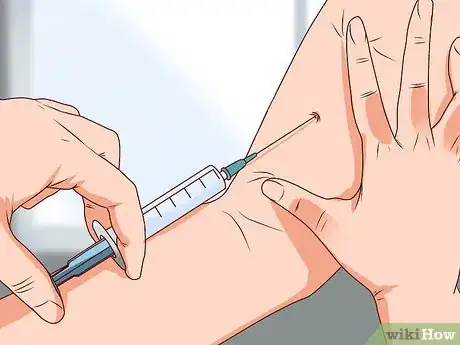
-Step-11.webp)
-Step-12.webp)
-Step-13.webp)


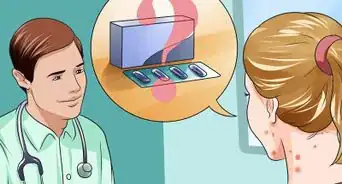


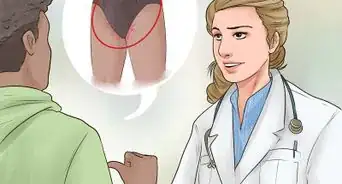


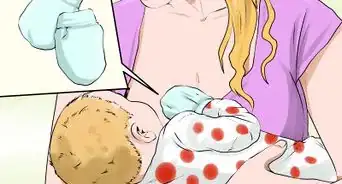
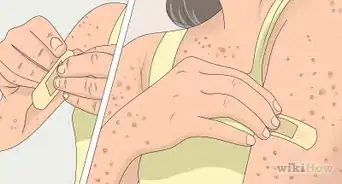
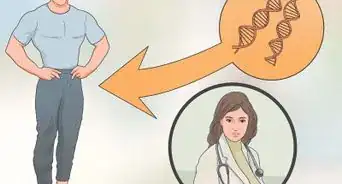


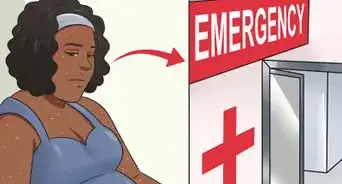











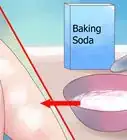
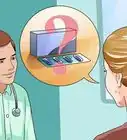




































Medical Disclaimer
The content of this article is not intended to be a substitute for professional medical advice, examination, diagnosis, or treatment. You should always contact your doctor or other qualified healthcare professional before starting, changing, or stopping any kind of health treatment.
Read More...